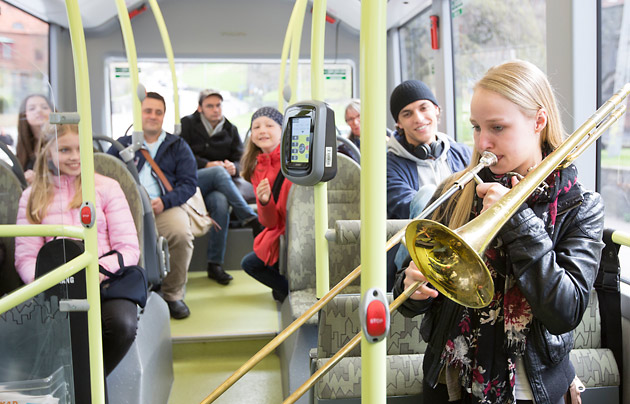14 March, 2017 By: Rebecca Martin
In Sweden, clever minds are looking to make owning your own car a relic of the past, and getting a lift as easy as ordering a pizza.
With driverless vehicle trials taking to real-life roads, a future where an app can order a driverless car to pick us up seems tantalisingly close.
The Swedish are not waiting for driverless tech to reach a critical mass. Instead, they’re investigating and testing how our current transport options can be connected.
They want commuters to choose where they want to go, and then use an all encompassing mobility service – using everything from trains to bikes to driverless cars – to get there.
“We call the idea 'smart mobility'. It’s about using connectivity and digital technologies to bring together all the aspects of our current transport infrastructure, sharing economy and driverless vehicles, to make it easier for us to get around, fast,” says Jan Hellåker, project director of Drive Sweden.
“We have tremendous potential to vastly improve mobility by leveraging all of these technologies.”Sweden in the driver's seat
If anyone has the DNA to sort out our congestion, mobility and transport solutions, the Swedish do.
Despite a population numbering less than 10 million, Sweden is home to five major vehicle manufacturers (hello Volvo) and a strong computing and communications technology base.
This means that the Drive Sweden project, based at Gothenburg’s Lindholmen Science Park and working to create ‘mobility’ solutions, has the ability to be more than just a think-tank.

Drive Sweden’s partners include some of the best industry (Volvo, Ericsson, IBM), government and academic minds working together on every aspect of the coming transport revolution, from road safety and legislation to business models, technology and infrastructure – and testing their ideas in real life to solve local problems.
“We're fortunate to have enough of a domestic industrial base to make this happen ‘at home’, without having to wait for other countries,” he says.
What does smart mobility look like?In Drive Sweden’s view of ‘smart mobility’ car ownership will be obsolete.
“You won’t need to buy a car to get around - instead you subscribe to a mobility service,” says Jan.
“So every day, you get a ‘menu’ of suggested options, maybe using mass public transport for part of it, perhaps a self-driving car picks you up if you need help to get to the nearest station.
“Perhaps one weekend, you go cruising down the coast in a convertible, another day you have a pick-up truck so you can bring in some furniture," he says.
To make it work, Jan says you need a co-ordinated system where travel modes – car, bus etc, and the various ticketing and fare systems are aligned and digitally connected.
“The beauty of this model is that is can work pretty much anywhere in the world, with the proviso that the public transportation network is ubiquitous enough, because mass transit will still need to be the backbone of the transportation network,” he says.
Turning thinking to action
The many partners within Drive Sweden are busy with various trials. Quite a few are looking at how to integrate driverless technology with current transport.
In Volvo’s ambitious Drive Me trial, 100 families in Gothenburg will use a fully autonomous car (Volvo XC90) for their daily commute for a year, alongside standard cars in real every-day traffic.
From an industry perspective, Scania is investigating how driverless trucks can increase efficiencies when transporting freight, while on public transport, new electric bus routes and infrastructure is being trialled to make it more sustainable and attractive to commuters through the ElectriCity project.

“The whole transport system is undergoing an amazing transformation right now,” says Jan. “The sharing economy is spreading to everything we do and Sweden is at the forefront of this transformation.
“Fifty years ago (3 September, 1967), Sweden made the transition from driving on the left side to the right. This change is definitely not going to be as abrupt, but we’ll go from where we are now to deploying ‘living lab’ pilots that will grow larger and larger over time.
“We’re in it for the long haul.”
How much could Sweden's future smart mobility approach save you? The cost of owning and running a popular mid-size SUV in WA is around $11,200 a year*. Find out more about how much it costs to run your car from RAC's 2016 vehicle operating cost survey.
Car running costs
Just like the Swedes, we're also looking into what the future of WA's mobility might look like. As part of that, we are trialling our RAC Intellibus™ along the South Perth foreshore, to test and understand how driverless technology can play a role in WA's future.
Enjoy this story? Get more of the same delivered to your inbox. Sign up to For the Better eNews.
